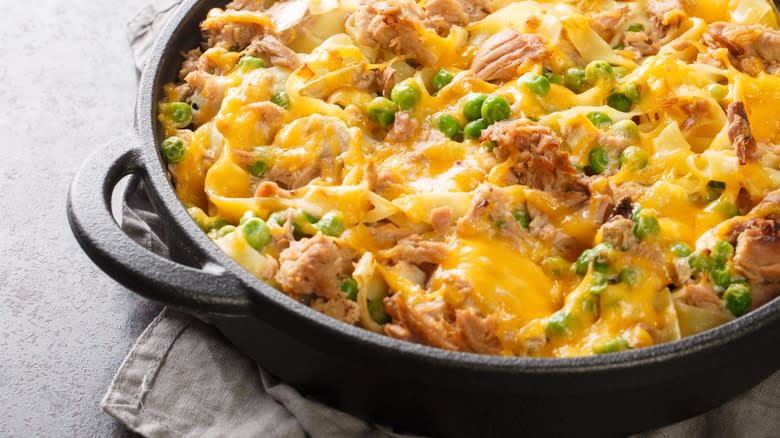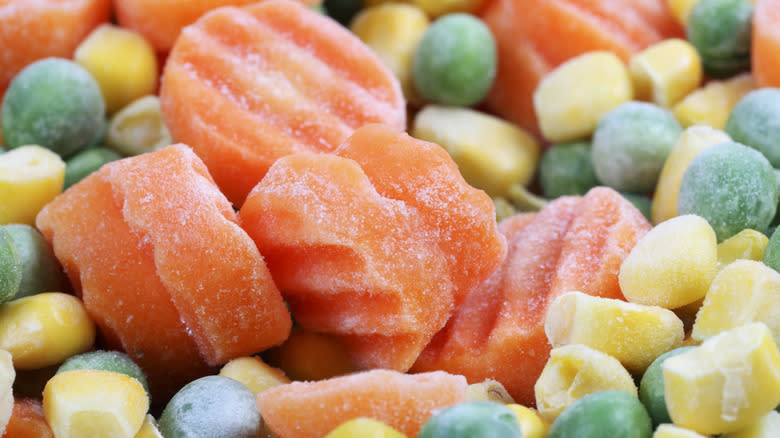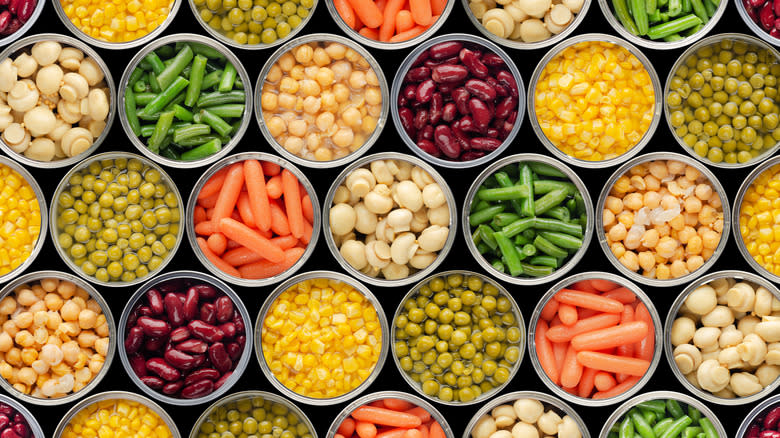Think Twice Before Adding Frozen Veggies To A Casserole

There's a good reason most people keep their freezer stocked with at least a few different veggies at all times. They are affordable, super convenient, and they come in handy between trips to the grocery store when there's nothing left in the crisper. They're also perfect for soups and stews, make an excellent addition to pasta dishes, and in a pinch frozen vegetables are even pretty good roasted. But if there's one way you may not want to prepare them, it's in a casserole.
It might seem counterintuitive. After all, you do want to precook waterier fresh veggies (like mushrooms and onions) most of the way before adding them to a casserole, and that's exactly what's done with the blanching process that fresh vegetables undergo before being frozen. Still, it's not quite that simple considering the effects of freezing at the cellular level. As the liquid in the veggies turns to ice it bursts through the cell walls, making its escape that much easier upon thawing -- which is why frozen vegetables are nowhere near as crisp as fresh ones. Cooked into a casserole, that same liquid will leak out and make a goopy mess.
Read more: 11 Of The Best Cooking Tips From Bobby Flay
Determined To Use Frozen Vegetables Anyway? Do This

Does that mean it's impossible to use frozen vegetables in a casserole? Well no, it's just not the best use of those veggies. Nor will the result be a top-notch casserole -- hence the warning to think twice first. But if you still find yourself reaching into the freezer for green beans, broccoli florets, carrots, and more, then it's important to make sure and get all of the excess liquid out of them. One way to do this is to steam the veggies in a microwave-safe bowl for a couple of minutes, then carefully drain all of the excess water out. On the other hand, some veggies can be squeezed dry. This works for leafy greens like kale. Whatever you do, don't thaw those frozen veggies first, as that is a mistake that will make them instantly soggy.
To combat any remaining moisture in your casserole, you'll want to be sure to use plenty of breadcrumbs, crispy French fried onions, finely grated cheese, crushed nuts, or other absorbent ingredients. This will help sop up whatever extra water that is left while also adding a bit of texture to the dish.
What To Use Instead Of Frozen Vegetables

Both fresh and canned vegetables work better in casseroles than the frozen ones do, though, certain fresh varieties (mainly hardier veggies like carrots and potatoes) will require more precooking. Not doing so will result in an overly crunchy texture that won't mesh well with the rest of the casserole. This is where blanching comes in handy, which involves simmering the vegetables for a few minutes before adding them to ice water (something you can actually do a day or two ahead of time).
Using canned vegetables is a great way to skip the cooking step, however. Even though they're not super crisp, canned vegetables are actually ideal for casseroles. While they may be on the soft side, as long as they're drained properly they won't leak a bunch of liquid into the casserole the way frozen ones will. So, if you can afford to do so, save that frozen vegetable medley for another day and break out the can opener (or use fresh produce) instead. Your casserole and your taste buds will thank you.
Read the original article on Daily Meal.

